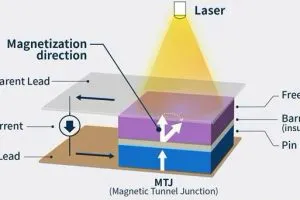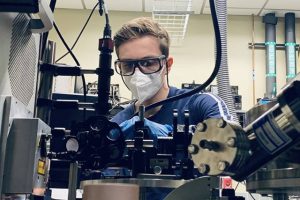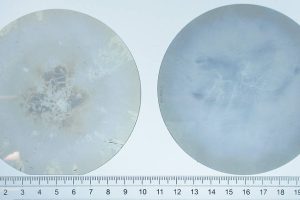
“MicroLED’s high radiance allows us to free up space on the display panel to incorporate photodetectors,” said Leti’s project leader Michaël Pelissier. “Demonstrating the integration of microLEDs with photodetectors paves the way for multi-functional displays that combine imaging, gesture recognition and even biometric scanning.”
The display-sensor was described in a presentation at Display Week in San Jose titled ‘Co-integration of organic photodetector with microLED dedicated to multifunctional display application’.
While the emissive pixels can be shrunk to release space for the organic photodetector, “achieving seamless integration between microLED and photodetectors has remained a major technical challenge”, said Leti.
In the proof-of-concept device, the pixels were shrunk to 35 x 35μm which left a grid-like gutter between them, into which a C60-doped zinc phthalocyanine photo-sensor structure was built.
Each conceptual ‘display pixel’ in the demonstrator has 800 of these micro-LEDs connected in parallel, integrated with a single photo-sensor grid.
The presentation went on to describe the mutually-beneficial stages required to define and build both the emissive and sensitive structures side-by-side on the same substrate, rather than stacking them.
Optical cross-talk between emitter an sensor was quantified during the project, and remains an issue for simultaneous operation, said Leti, adding that in the next phase of the work “researchers will investigate various photodetector technologies that can be integrated with microLEDs to optimise performance and reduce cross-talk” and “explore the potential of this technology for specific applications, such as physiological parameter tracking”.
Integrating a third class of device, infra-red emitters, is also under investigation to provide a choice of illumination wavelength during sensing (represented by pink spots in the artists impression provided by the lab).
According to the organisation, potential uses include: fingerprint sensing anywhere on a display, the extraction of physiological parameters such as heart rate and blood oxygen level, and close-in gesture recognition.
Founded in 1967 and based in Grenoble, CEA-Leti is a world-class micro and nano-technology lab with 2,000 staff. It has 3,200 patents and 80 start-ups to its name.
 Electronics Weekly
Electronics Weekly



